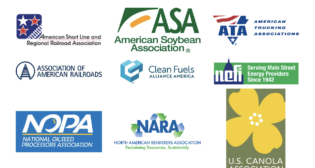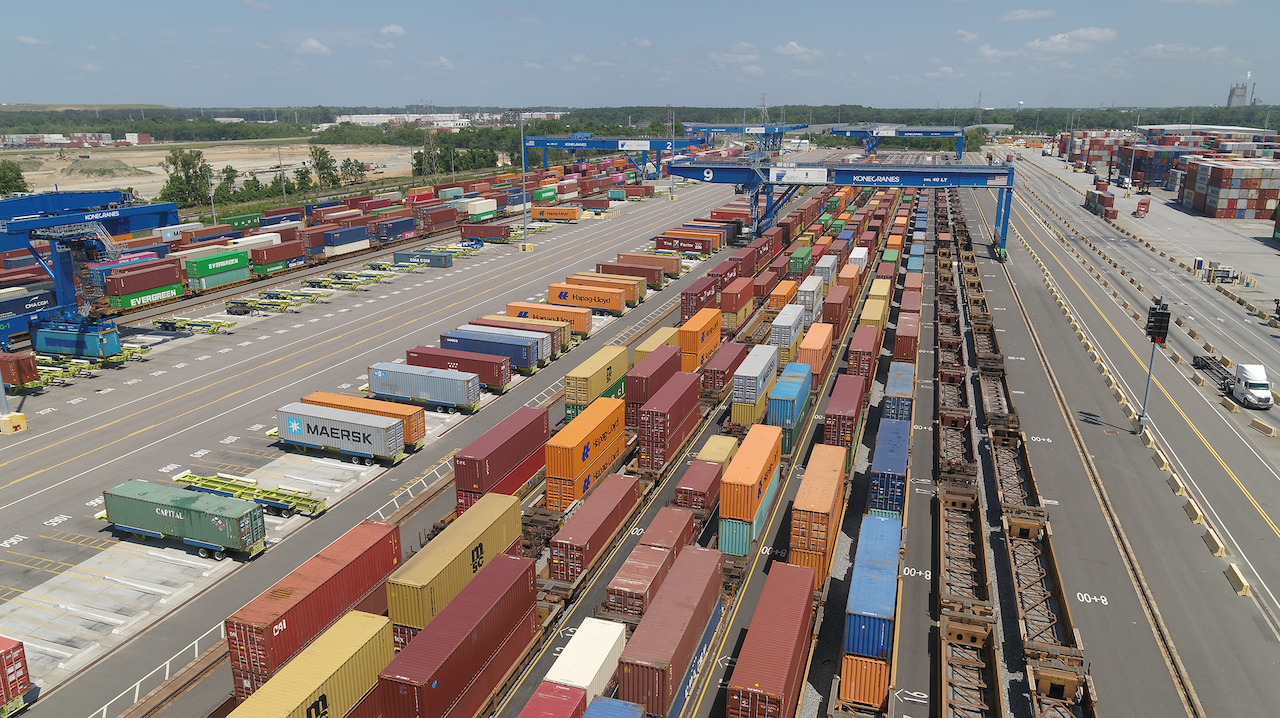
Intermodal Briefs: ITS Logistics, GPA
Written by Carolina Worrell, Senior Editor
GPA photo
ITS Logistics releases its February forecast. Also, Georgia Ports Authority’s (GPA) January rail cargo jumps 27%.
ITS Logistics
ITS Logistics on Feb. 20 reported “a concern as to whether trucking, chassis, and container storage capacity will be able to effectively handle expected volumes.” The cautionary response is due to a “decrease in numerous assets due to avoidance of West Coast ports around post-Covid congestion concerns and labor unrest in 2023.” Shippers and BCOs should also “be on the alert as rates and capacity availability are projected to become extremely volatile.”
The findings come from the February edition of the ITS Logistics US Port/Rail Ramp Freight Index. The Nevada-based third-party logistics (3PL) firm releases the index each month, forecasting port container and dray operations for the Pacific, Atlantic and Gulf regions. Ocean and domestic container rail ramp operations are also highlighted in the index for both the West Inland and East Inland regions.

“As forecasted in the January index, there are significant pre-Lunar New Year volumes shipping to all regions of the U.S. as shippers and BCOs restock inventories,” said Paul Brashier, Vice President of Drayage and Intermodal for ITS Logistics. “Volumes are even more pronounced because of additional former Suez Canal container traffic utilizing the U.S. West Coast, primarily Los Angeles/Long Beach, as the entry point into the country. This has initiated the cause for concern in these other areas. In addition, due to a significant amount of infrastructure and trucking capacity exiting the market post-Covid, and last year specifically, this has heavily impacted the rates and capacity overall.”
According to recent CNBC coverage, “top CEOs globally are closely following the tensions in the Red Sea and warning the industry at large that the volatility for supply chains is likely here for the long term.” Furthermore, ITS Logistics reports that while supply chains have been able to rebound since the pandemic successfully, “the recent conflicts, in combination with climate change and intricate geopolitical disruptions, are resulting in higher freight rates.”
“Rail operations will be a concern as well,” continued Brashier. “Much of the diverted freight from the Suez Canal coming into the U.S. West Coast will need to move East. Unplanned volume and IPI volume will strain rail capacity and ramp operations throughout the nation. This is especially true in the larger metros of Chicago, Dallas, Memphis, and Atlanta. Chassis and trucking capacity are a concern as we move into March.”
Members from the National Retail Federation (NRF) recently reported terminal appointment challenges for trucks to pick up containers. In addition, it was noted that rail-bound container dwell times were “starting to increase with rail car imbalances and significant demand.” Overall, according to Xeneta, rates on ocean routes from Asia to Europe and the Mediterranean “began to climb at the top of the month, but for U.S.-bound trade, prices have continued climbing.”
GPA
GPA on Feb. 20 reported that cargo moved by rail at the Port of Savannah reached 47,132 containers in January, an increase of 10,000 boxes, or 27%.
“Customers 250 miles inland and greater are tapping Savannah as their port of choice for ag exports, manufacturing components and retail goods,” said GPA President and CEO Griff Lynch. “The investments we’ve made in rail capacity have not only increased the number of containers the Port of Savannah can handle each year, but extended our reach to new markets that can be served effectively by Garden City Terminal.”
GPA put the finishing touches on its $220 million Mason Mega Rail project last year, providing 24 miles of on-terminal track.
“Areas such as Atlanta, Dallas and Memphis rely on the Port of Savannah to handle import and export goods with speed and efficiency,” Lynch said. “Our improved capacity means businesses across these important markets can grow their trade through Georgia.”
Additionally, GPA reported handling 428,000 twenty-foot equivalent units (TEUs) in January, an increase of 6,300 containers, or 1.5% compared to the same month last year.
“Our goal is to ensure GPA customers have the necessary port infrastructure capacity and supply chain connectivity to support their long-term growth ambitions in world markets. This is what drives our port master plan investments,” said GPA Board Chairman Kent Fountain. GPA recently completed $1.9 billion in infrastructure improvements and anticipates investing $4.2 billion in the next 10 years.
At the Port of Brunswick, Colonel’s Island Terminal handled 65,400 units of Roll-on/Roll-off (Ro/Ro) cargo in January. After a strong showing with 51 Ro/Ro vessel calls last month, GPA says it is “on track to handle a record of approximately 800,000 vehicles in Fiscal Year 2024.” GPA’s monthly average for Ro/Ro cargo is 69,000 units for the fiscal year to date, compared to a monthly average of 60,400 units for the same period last fiscal year.
![Balsa 91 transits the Fort McHenry Channel [Key Bridge Response 2024 Unified Command photo by U.S. Army Corps of Engineers Visual Information Specialist Christopher Rosario]](https://www.railwayage.com/wp-content/uploads/2024/04/Balsa91-315x168.jpg)


